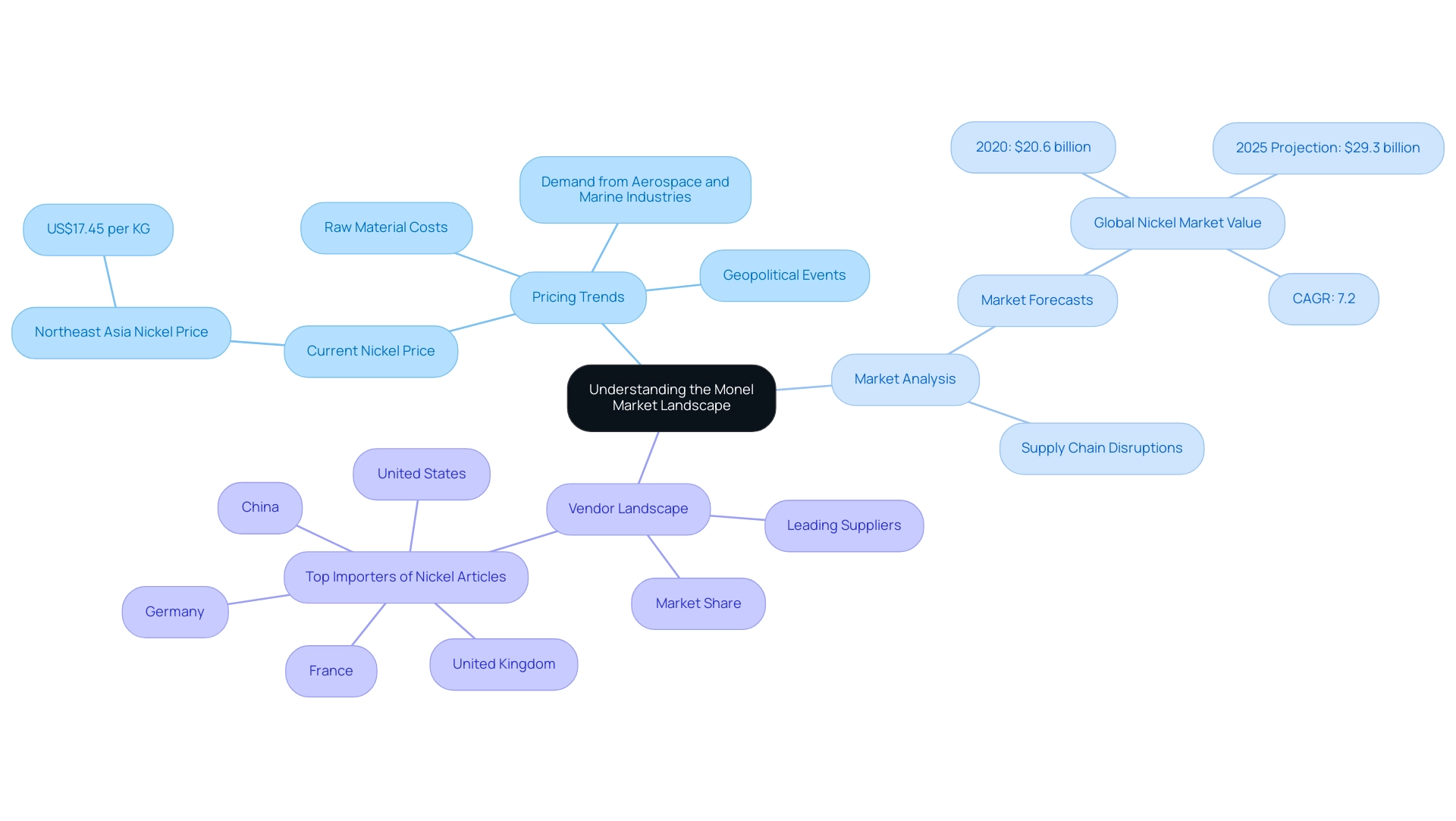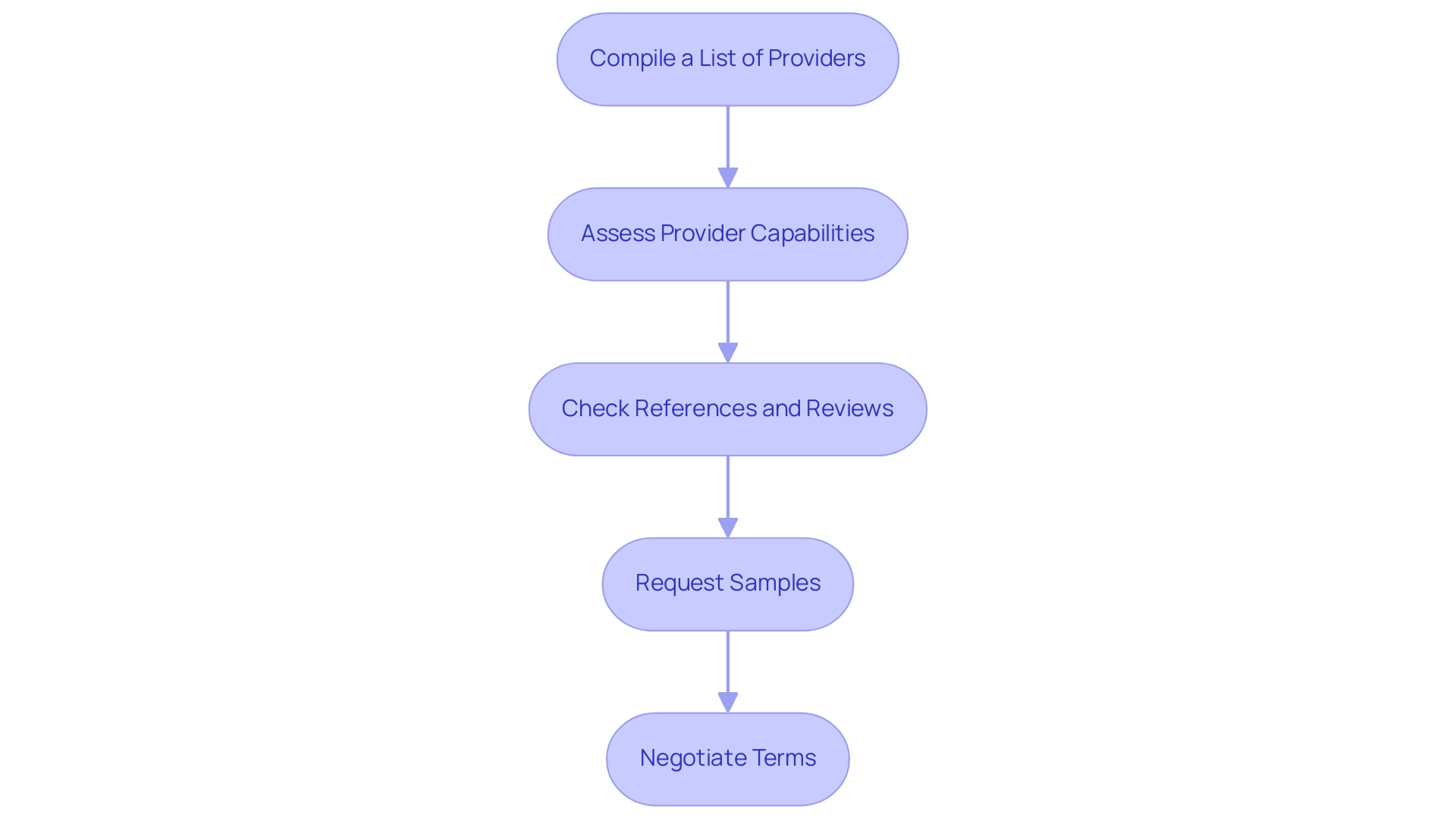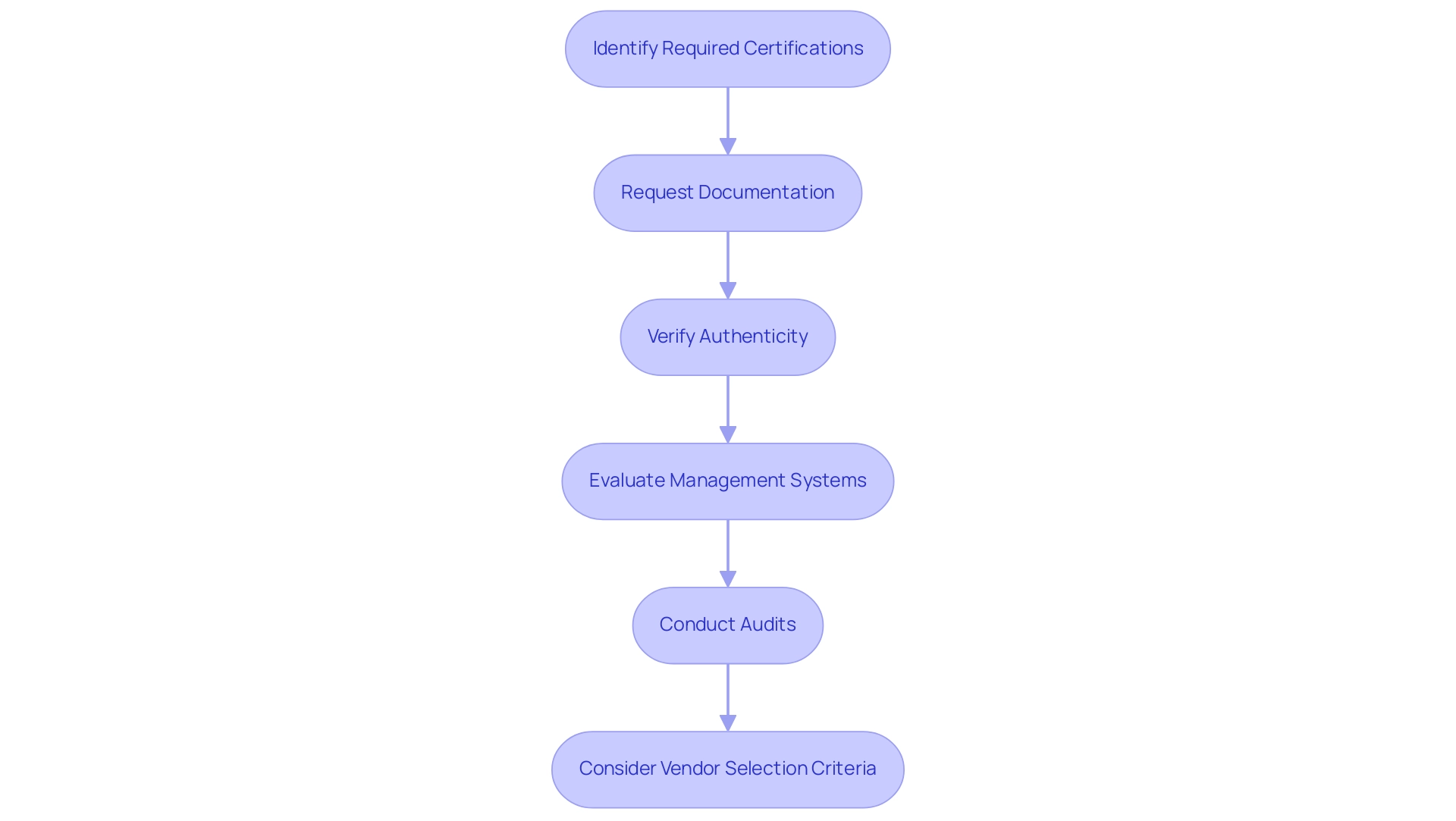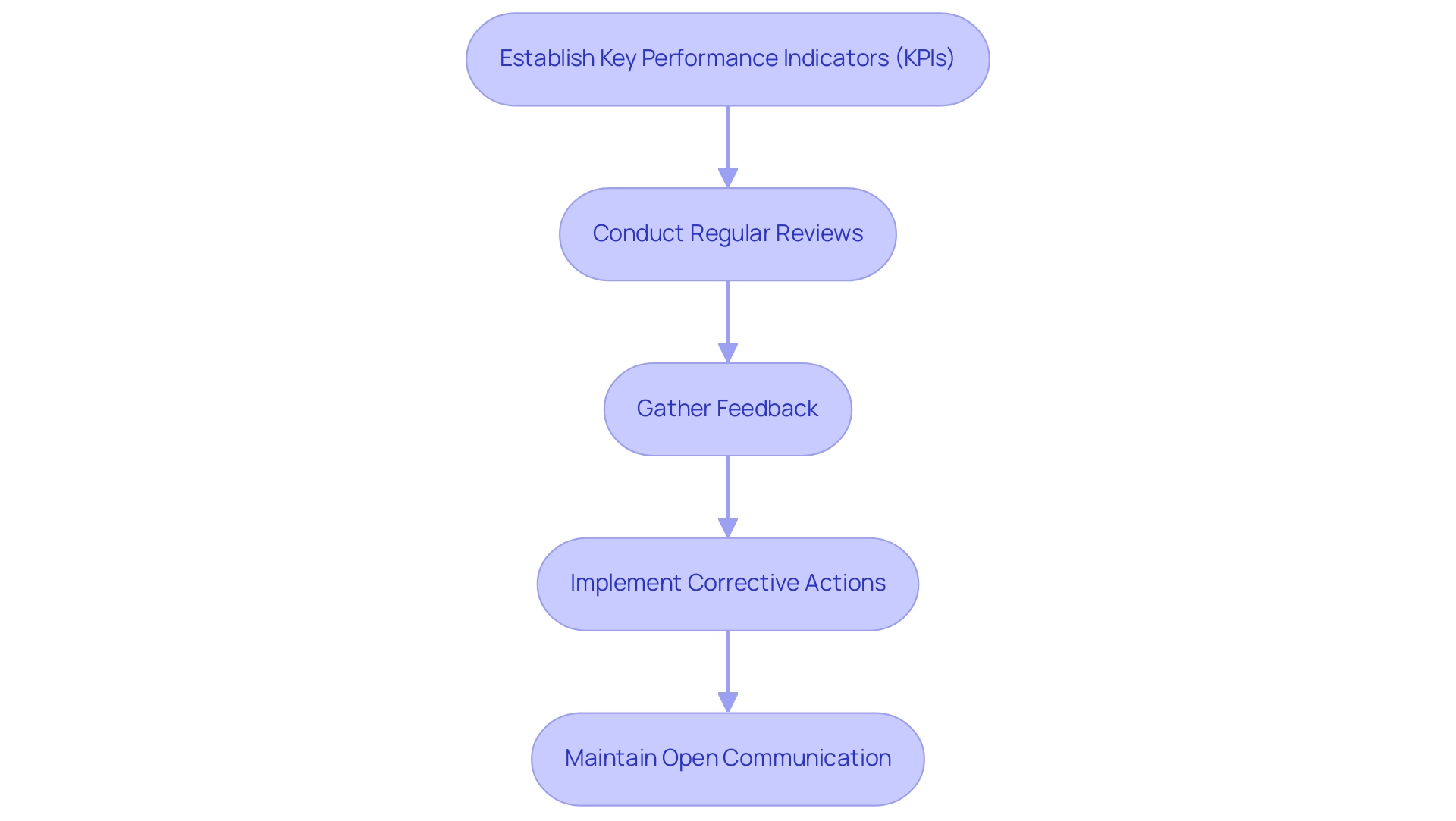Blogs

How to Choose the Right Monel Suppliers: A Step-by-Step Guide
Introduction
In the intricate world of procurement, understanding the Monel market is paramount for making informed decisions that drive organizational success. With its unique properties and applications across various industries, Monel has become a vital material, particularly in high-temperature and corrosive environments. As procurement managers navigate this complex landscape, they must delve into:
- Pricing trends
- Supplier capabilities
- Compliance standards
to optimize their sourcing strategies. By employing a structured approach to:
- Supplier evaluation
- Contract negotiation
- Performance monitoring
organizations can secure reliable partnerships that not only meet their immediate needs but also position them for future growth in an ever-evolving market. This article provides a comprehensive guide to mastering the nuances of Monel procurement, ensuring that professionals are equipped with the insights and tools necessary to thrive in this competitive arena.
Understanding the Monel Market Landscape
To navigate the complexities of the Money market effectively, it is essential to conduct thorough research on current pricing trends and historical data. Begin by utilizing industry reports and market analysis tools that provide insights into the supply-demand dynamics of Money. Key considerations include:
- Pricing Trends: Keep a close watch on fluctuations in Monel prices, which are significantly influenced by raw material costs, geopolitical events, and demand from critical sectors such as aerospace and marine industries, as well as the role of monel suppliers.
With the Northeast Asia nickel price currently at US$17.45 per kilogram, understanding these factors is crucial for anticipating price movements. Regular updates to pricing data and the addition of new indexes are vital for maintaining accuracy in your assessments.
- Market Analysis: Consult reports from reputable sources to gain an understanding of market forecasts and potential supply chain disruptions. The global nickel market, valued at $20.6 billion in 2020, is projected to reach $29.3 billion by 2025, reflecting a compound annual growth rate (CAGR) of 7.2%.
This growth highlights the rising demand for nickel in diverse applications, including aerospace, automotive, and energy, which subsequently influences Monel pricing.
- Vendor Landscape: Identify leading monel suppliers in the Monel market and assess their market share. Evaluate their reputation and reliability to ensure that you collaborate with providers who can meet your strategic needs. Understanding the dynamics of supply and demand for Money, particularly considering the leading importers of nickel articles in 2020—including the United States, France, and China—will provide critical insights into market dynamics and assist you in making informed selections. By grounding your procurement strategy in this foundational knowledge, you position yourself to make strategic choices that align with market realities.

Identifying and Evaluating Potential Monel Suppliers
To effectively identify and evaluate potential Monel suppliers, including those specializing in mica tape and related high-temperature materials, adhere to the following structured steps:
Compile a List of Providers: Utilize industry directories, trade shows, and online platforms such as ThomasNet to create a robust list of potential providers. This foundational step ensures a diverse selection from which to choose, including mica tape providers who offer high-temperature insulation solutions.
Assess Provider Capabilities: Methodically evaluate each provider based on critical criteria, including production capacity, control processes, and adherence to international standards such as ASTM and ASME. Notably, Monel® Alloy 400 can be machined at standard rates with conventional machine tools, which is an important consideration for production efficiency. As emphasized in a recent study on vendor selection criteria in the iron and steel sector, factors such as product excellence, delivery compliance, and price remain crucial, while additional characteristics like technological capability and financial strength significantly affect the viability of providers. As mentioned by procurement expert Arpan Kumar Kar, these capabilities should be key considerations in your evaluation process, especially when assessing providers of mica tape and other electrical insulation materials.
Check References and Reviews: Interact with existing clients to gather insights on provider performance, reliability, and service standards. This first-hand insight is invaluable in assessing a vendor’s reputation in the market, particularly for those providing specialized products like mica tape.
Request Samples: Before making a final decision, request material samples to evaluate their quality and suitability for your specific applications. This hands-on assessment can clarify whether the vendor’s offerings, including mica tape, meet your operational standards.
Negotiate Terms: After shortlisting vendors that align with your criteria, initiate negotiations to discuss pricing, lead times, and payment terms. Ensure that the final agreement is consistent with your procurement strategy and operational needs.
By diligently following these steps and considering Monel suppliers along with mica tape suppliers, you can robustly assess and select suppliers capable of providing high-quality products, ultimately enhancing your procurement outcomes. The case study titled “Vendor Selection Criteria in the Iron and Steel Industry” further supports that product quality, delivery compliance, and price are critical factors, underscoring the importance of a thorough evaluation process. By considering both technological and financial capabilities, as emphasized by Kar, you position your procurement function for success with Monel suppliers in the Monel and electrical insulation materials industry.

Assessing Supplier Compliance and Certifications
To effectively evaluate vendor compliance and certifications, procurement managers should follow a systematic approach that includes the following steps:
- Identify Required Certifications: Begin by determining which certifications are essential for your specific industry and applications. For instance, ISO 9001 is crucial for overall quality management, with compliance statistics indicating that over 1 million organizations worldwide are certified, while AS9100 is often required for aerospace applications.
- Request Documentation: Proactively ask vendors to provide copies of their certifications and relevant compliance documentation. This initial step is critical for transparency and accountability.
- Verify Authenticity: Utilize official databases or directly contact certifying bodies to confirm the authenticity of the certifications submitted by the vendors. This verification process is essential to avoid low-quality vendors and ensure that your network of providers meets established standards.
- Evaluate Management Systems: Assess the vendor’s management systems to ensure alignment with your organization’s standards and operational requirements. A robust management system is a hallmark of dependable suppliers.
- Conduct Audits: Whenever feasible, perform on-site evaluations of potential vendors. This enables a comprehensive assessment of their operations, control processes, and adherence to compliance standards.
- Consider Vendor Selection Criteria: Incorporate the 11 vendor selection criteria, such as cost, excellence, delivery, and compliance, into your evaluation process to ensure a comprehensive assessment of potential providers.
By ensuring that providers meet the necessary compliance and certification standards, you not only safeguard your procurement process but also mitigate risks associated with material excellence. As emphasized by Barbara Cook, a financial writer for Tipalti,
Strategy and competency in the vendor selection process contribute to a company’s vendor risk management.
A recent case study of an electronics manufacturing firm underscores this: they utilized a state-of-the-art eProcurement system to navigate their vendor selection process for a customized ASIC chip.
By issuing an RFQ and evaluating potential vendors against technical requirements and delivery timelines, they successfully selected a qualified vendor, ensuring timely delivery and quality critical for their product launch. This approach is equally relevant to monel suppliers, emphasizing the importance of rigorous compliance processes to enhance partnerships and contribute to operational success.

Negotiating Contracts with Monel Suppliers
Negotiating agreements with Monel suppliers, particularly those that specialize in electrical insulation and high-temperature products like mica tape, requires a strategic approach to secure favorable terms. Here are key strategies to consider:
Prepare Thoroughly: Conduct comprehensive research on the vendor’s history, market standing, and pricing frameworks. Understanding these elements will empower you to present a well-informed negotiation stance. This is particularly crucial when working with providers of specialized materials like mica tape, which are essential for various applications in high-temperature environments. Search for vendors that provide unique features, such as improved thermal resistance or certifications that match your industry standards.
Define Your Needs: Clearly articulate your requirements concerning pricing, delivery schedules, and quality standards prior to negotiations. This clarity not only establishes expectations but also assists in aligning the provider’s offerings—such as electrical insulation papers and high-temperature fabrics—with your organizational goals. Consider the competitive advantages of possible providers, such as their ability to offer customized solutions or quicker lead times.
Build Relationships: Establishing rapport with suppliers is crucial. Encouraging open dialogue can result in improved teamwork and trust, which are essential for lasting partnerships, particularly when sourcing crucial items such as mica tape that can affect your operations. Regular check-ins can help maintain a strong relationship and facilitate smoother negotiations.
Be Flexible: While advocating for your needs is important, maintaining a willingness to compromise can lead to mutually beneficial agreements. Flexibility often paves the way for innovative solutions that satisfy both parties, particularly in the technical fields where specific material requirements might necessitate adjustments. For instance, being open to alternative product specifications can sometimes yield cost savings.
Document Everything: Meticulously document all negotiated terms in the contract. Clear documentation helps to prevent misunderstandings and ensures accountability throughout the duration of the agreement.
Incorporating behavioral factors such as loss aversion and prospective accounting can further enhance your negotiation performance. As Yinghao Zhang states, “This chapter describes an activity for introducing two types of risk-sharing contracts, buyback and revenue sharing, exploring when each is more appropriate to use.” Understanding how these contracts can influence negotiations is critical.
For instance, in a hypothetical scenario with a mica tape provider, sharing the risk of supply-demand mismatches through a revenue-sharing model could lead to increased channel profit, demonstrating the practical application of these strategies among Monel suppliers.
By applying these strategies, procurement managers can handle the intricacies of vendor negotiations efficiently, especially when working with specialized providers of mica tape and associated products, ultimately securing agreements that align with their organization’s goals and foster successful collaborations in the Money industry.

Monitoring Supplier Performance
To effectively monitor supplier performance in the procurement of Monel materials, particularly from Mica Tape suppliers, it is essential to implement a structured approach that includes the following practices:
Establish Key Performance Indicators (KPIs): Begin by defining clear KPIs tailored to evaluating vendor performance, especially for Mica Tape providers. Important metrics may include on-time delivery rates, quality defect rates, and responsiveness to inquiries. These indicators form the backbone of effective vendor evaluation. In fact, 48% of leaders assert that their management process accurately depicts employee achievements, highlighting the importance of well-defined KPIs.
Conduct Regular Reviews: Schedule periodic performance evaluations with Mica Tape vendors to assess their performance against the established KPIs. These reviews should serve as a platform to discuss achievements, address concerns, and collaboratively set improvement goals. As noted in the case study titled “Future Expectations for Performance Management,” there is a strong expectation for more frequent feedback and increased manager training in the coming years, which can be applied to vendor relationships as well.
Gather Feedback: Actively seek input from internal stakeholders who engage with Mica Tape vendors. Their insights can offer a deeper understanding of vendor effectiveness and service quality, facilitating informed decision-making. This corresponds with the statistic that 47% of leading organizations claim their technologies will improve at enhancing employee productivity, highlighting the necessity for effective monitoring.
Implement Corrective Actions: In cases where performance issues are identified, work collaboratively with Mica Tape providers to develop and execute corrective action plans that address the root causes. This proactive approach fosters continuous improvement and strengthens vendor relationships.
Maintain Open Communication: Establish and nurture open lines of communication with Mica Tape vendors. This transparency encourages problem-solving and helps build trust, which is critical for long-term partnerships.
By diligently monitoring supplier performance using these practices, procurement managers can ensure that their Mica Tape suppliers, as well as Monel suppliers, consistently deliver high-quality materials while also fostering strong, productive relationships that contribute to overall business success.

Conclusion
Navigating the Monel market requires a comprehensive understanding of pricing trends, supplier capabilities, and compliance standards. By conducting thorough research and utilizing market analysis tools, procurement managers can make informed decisions that align with current market dynamics. Recognizing the influence of geopolitical events and demand from critical sectors is vital for anticipating price movements, while understanding the supplier landscape is essential for establishing reliable partnerships.
Evaluating potential suppliers involves a structured approach that includes:
– Assessing capabilities
– Checking references
– Negotiating favorable terms
By meticulously following these steps, procurement professionals can enhance their sourcing strategies and secure high-quality materials that meet operational needs. Compliance with industry certifications further safeguards the procurement process, mitigating risks associated with material quality.
The negotiation phase is equally crucial, as it sets the foundation for successful partnerships. A strategic approach to contract negotiations, characterized by thorough preparation and open communication, fosters collaboration and can lead to mutually beneficial agreements. Monitoring supplier performance through established KPIs and regular reviews ensures that suppliers consistently meet expectations, thereby contributing to overall organizational success.
In summary, mastering the intricacies of Monel procurement not only enhances immediate operational capabilities but also positions organizations for sustainable growth. By adopting a structured and strategic approach to supplier evaluation, contract negotiation, and performance monitoring, procurement managers can navigate this complex landscape effectively, ensuring that their organizations thrive in an ever-evolving market.




